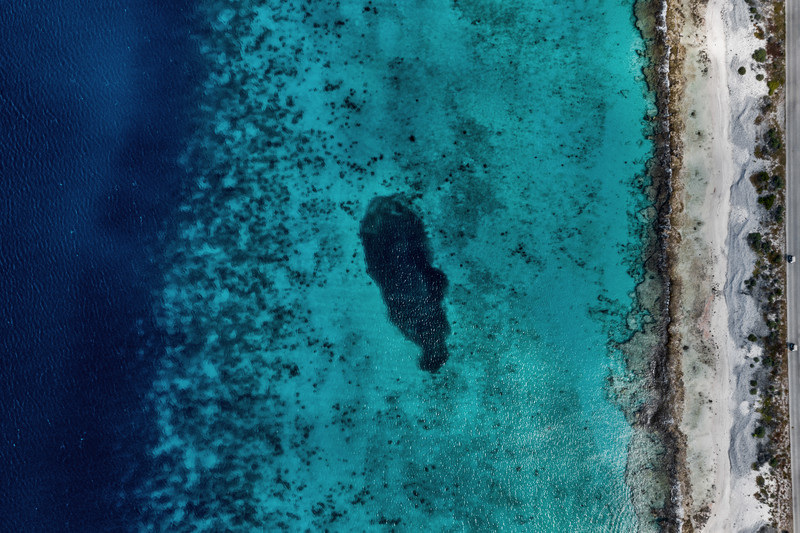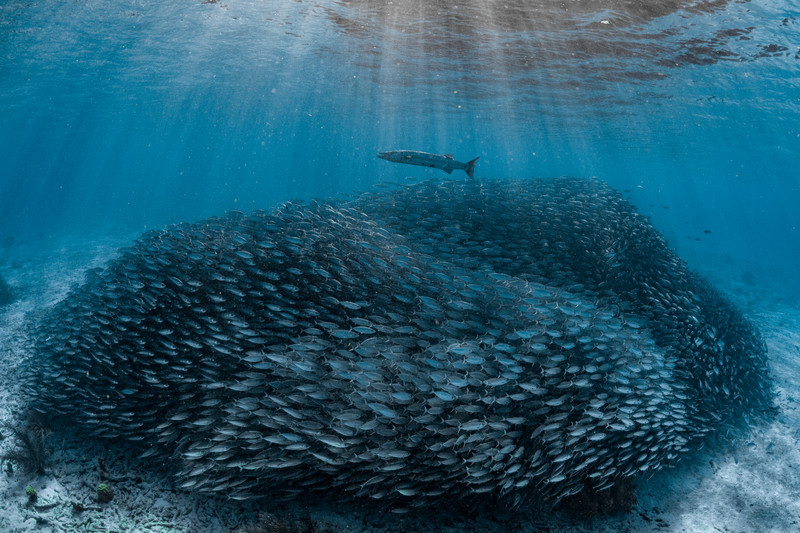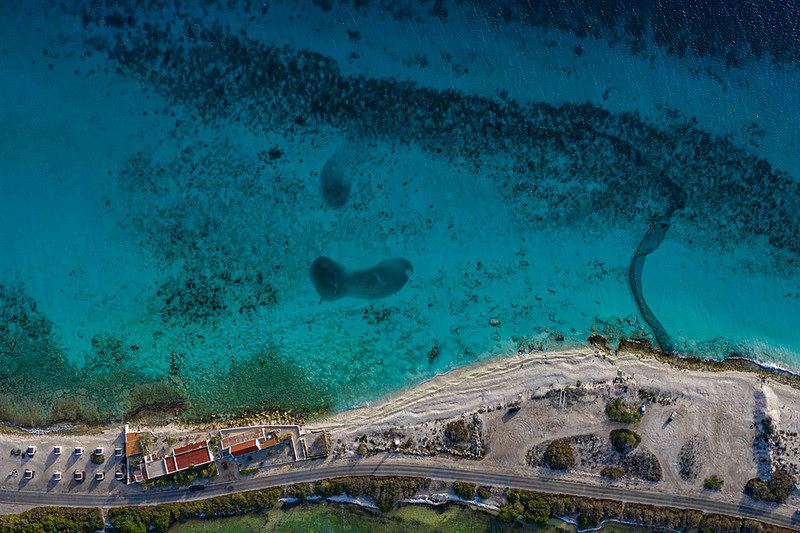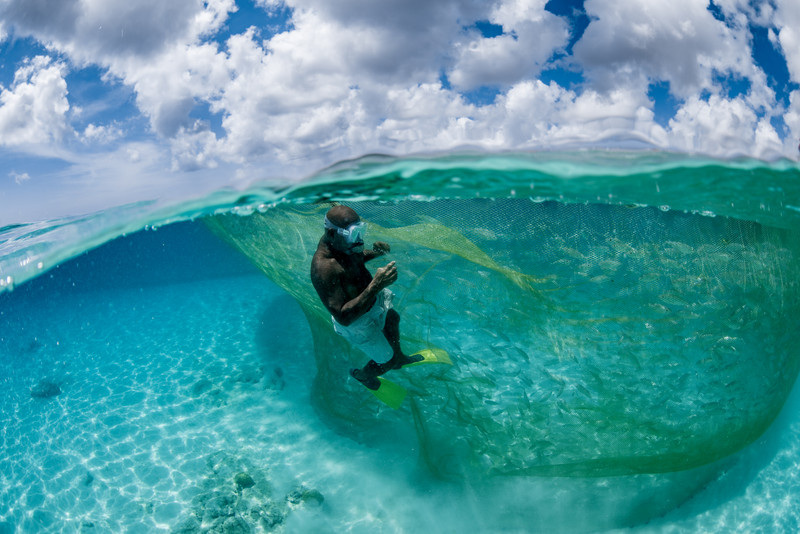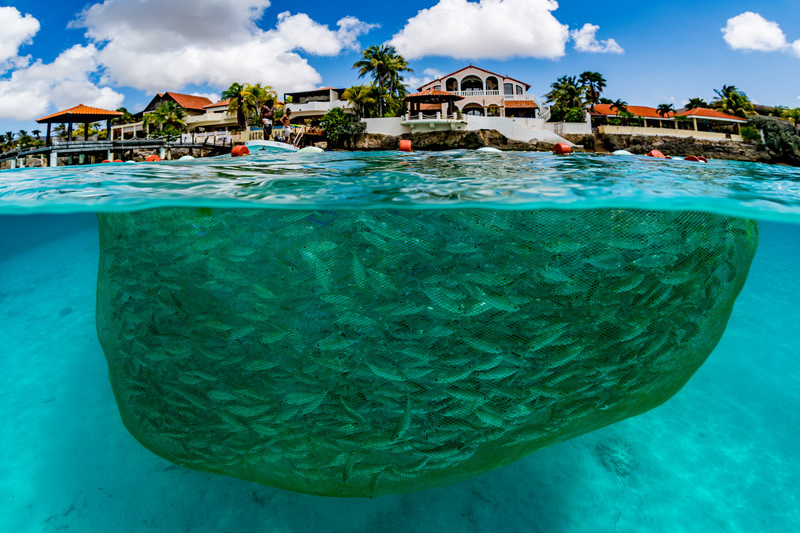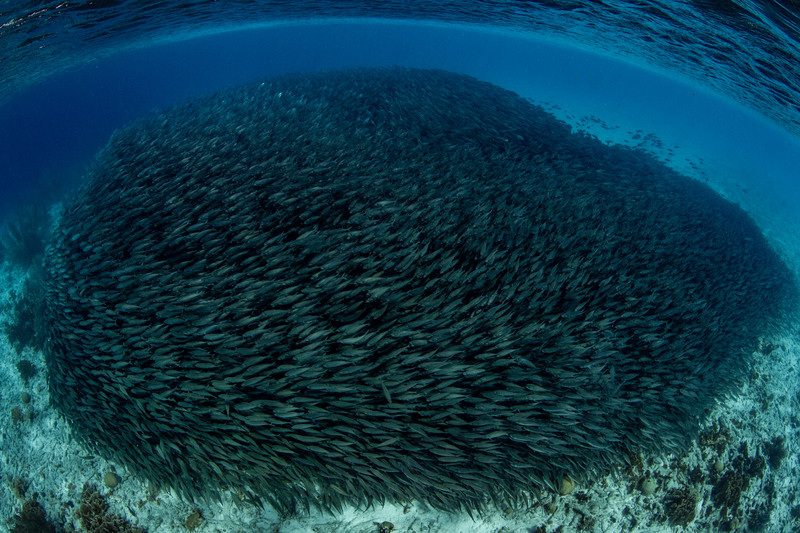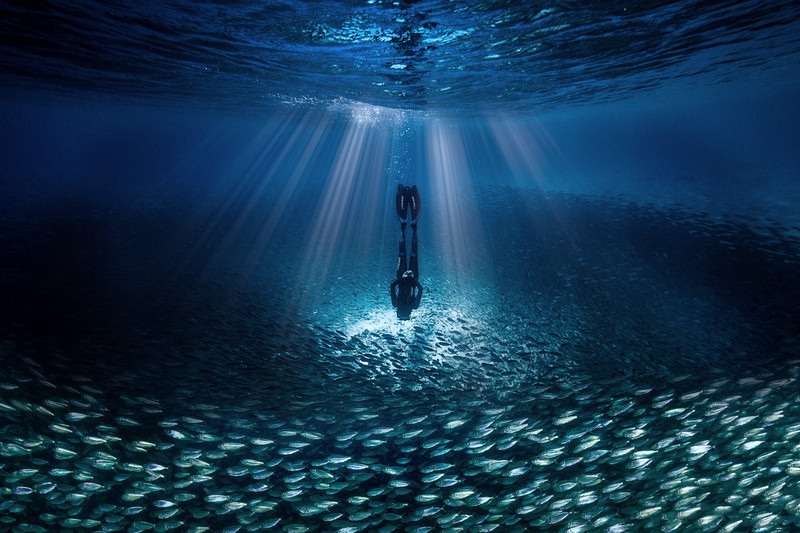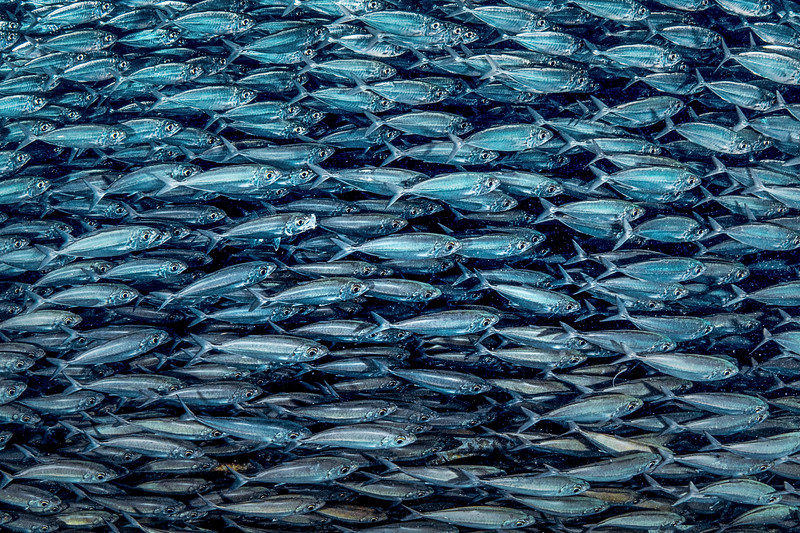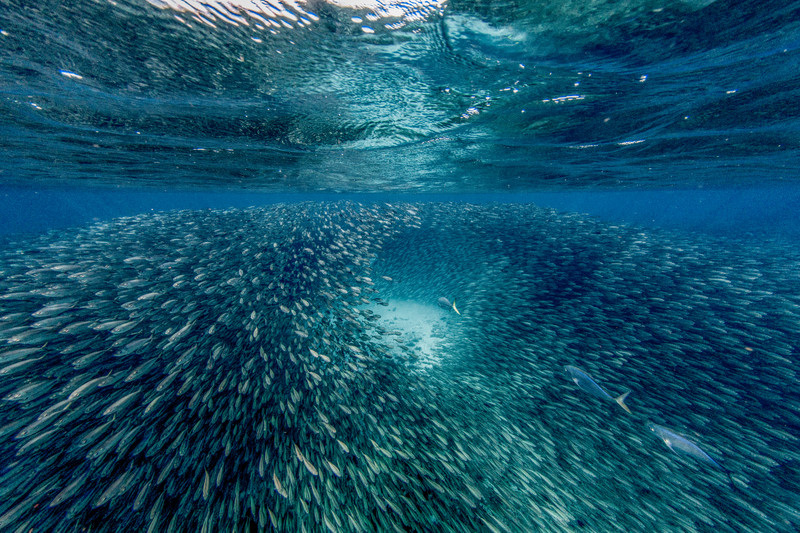Masbangos
© Lorenzo MittigaBig Eye Mackerel; a precious resource for the island of Bonaire
Masbangos (Big eye mackerel) are very popular among the people of the island of Bonaire, in the Dutch Caribbean. Important for the balance of the ecosystem, the Masbangos are the primary food resource for many predators. Nevertheless, this fish, capable of creating large aggregations called “bait-ball” or “fish-ball”, is a huge underwater attraction for divers and snorkelers, therefore has an important role in the island’s economy based mostly on scuba diving and snorkelling tourism. But most of all, local families of fishermen relay on the presence of the shoals of this species of fish throughout the year. Traditionally, part of the catches is shared with other local families with less economic possibilities.
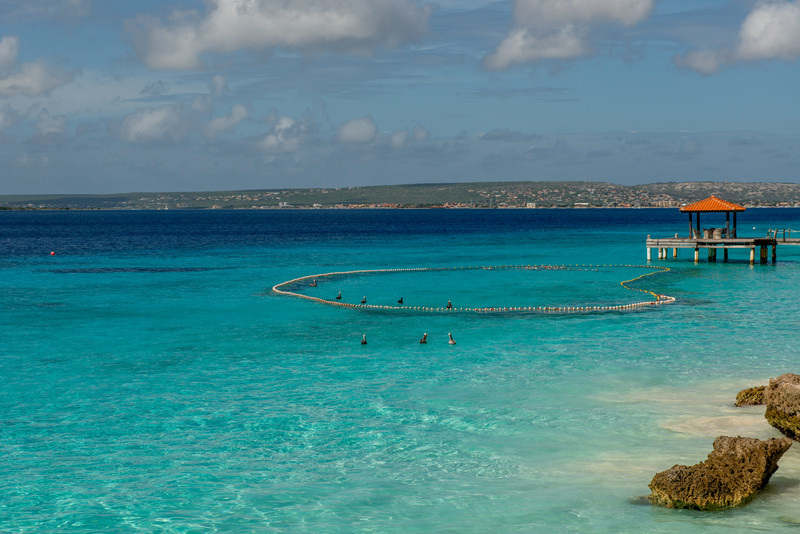

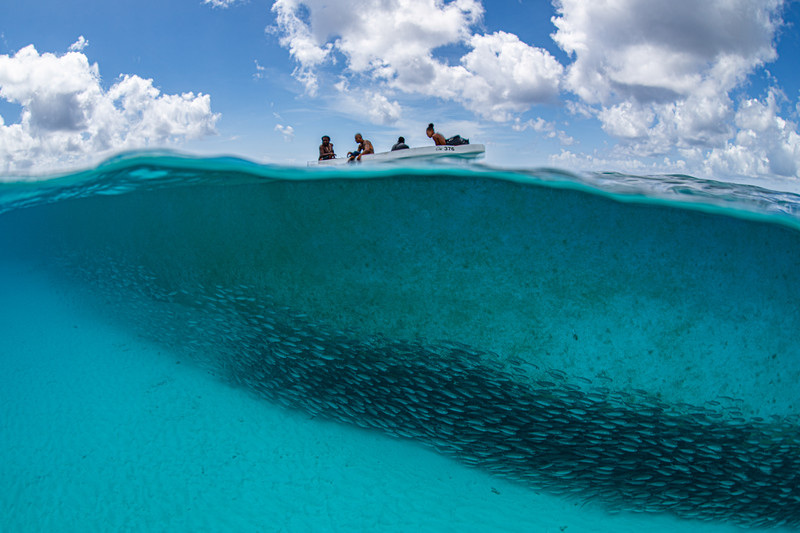
The shoals get close to the coast of the leeward side of the island and stays for a few months (from the end of March throughout October) ensuring a constant source of food for local people and predators in the ocean. Throughout most of the year the fish balls of Masbangos are scattered along the south-west coastline of Bonaire, in the shallow water. Each shoal moves daily along the coast searching for zooplankton to feed on and fulfil the reproduction (spawning). The sight of the shoal is amazing even from the shore: through the clear and turquoise water, the shoal appears as a dark cloud that changes constantly shapes, as the predators are following it.
For Bonaire island, the presence of the Masbangos, is an important tourist attraction, especially for snorkelers and divers. These can spend countless time observing and interacting with large aggregation of fish in the shallowest, clearest, warmest and safest water they can ever find. As source of food, Masbangos, are very important too. Is relatively cheap and affordable from anybody. The fishermen not only catch the fish to be sold at the Curacao market to make a living during those months of fishing, but they also sustain the poorest families of the island by giving them most of the catches.
The sustainable traditional fishing method
For Bonarian people the Masbango fishing is a tradition that is perpetrated through the generation. This kind of fishing becomes a family business during the time of the Masbango’s presence. All the active members (women included) of the “fishing families” are involved together in the work. For weeks the family fishing teams camps on the beach to visually follow the movements of the fish-balls and eventually to have surveillance on the nets.
The first stage of the fishing is to spot the fish in the shallow, clear turquoise coastal waters and wait that the shoal stops somewhere in order to set up the net. The net initially is stretched from the shore to the beginning of the drop-off. The Masbango’s shoal moves in the shallow, so when it encounters the net, the fishermen will circle it around the fish, creating a large enclosure.
This traditional way of fishing does not include any technological tool but only counts on the individual skills of the fishermen. The “spotter” swims close to the fish ball to estimate the movement of the fish toward the net setting.
The setting of the fishing net is operated with the help of skindivers. This kind of net fishing requires the fishermen to have swimming and freediving skills. The traditional method of fishing follows important rules to be followed in order to favor the species and ensure the continuity of it for the future.
Unfortunately, uninformed people are always there to criminalized the fishermen as they harvest their beloved “fish-balls” from the water, without thinking that the fish are not only an attraction, but also a source of food.

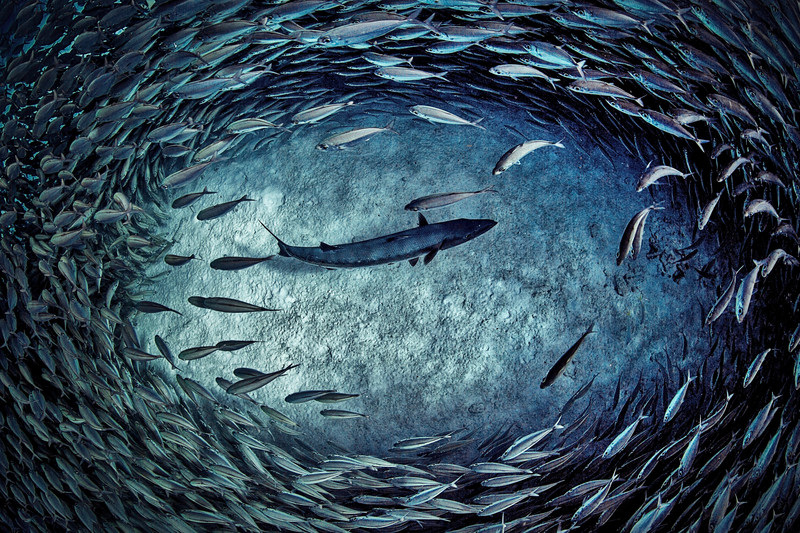
Waiting for the right moment is mandatory. The fishing team watch over the fish in order to determine the key moment for closing the net. No mistakes are admitted as it can ruin an entire season of fishing. The responsibility of a successful catch is high, as from this work will depend the fishermen families and many other people.
Once the Masbangos are in the fishing zone, close to the net, the fishermen will circle them and close the net around them. As the fish are ensured in the enclosure, they can be left for weeks until they complete the reproduction.
In respect of the surrounding environment and other sea creatures, these nets are not designed to catch the fish by “entanglement”, but instead are used just to create an enclosure where the fish remain in. Later, the fishermen will harvest them manually, box after box, from a small boat. A lot of effort is put in this fishing method. The group of fishermen coordinates as a team in order to succeed.
A skindiver checks continuously that the net doesn't get entangled on small coral patches or that other species are caught in it (Turtles, Tarpons, Barracudas or reef fish). Laws and governmental fishing rules are very well respected and took consideration, as the bad conduct of this work can result in a huge fine in money and confiscation of the net, which can destroy the economy many families.
The fishing doesn’t go unnoticed to opportunistic feeders. Active predators are attracted by the multitude of fish in and near the net. Common predators of the Masbangos are Pelicans, Barracudas, Jacks, Travelers, Groupers, Tarpons and, occasionally, Dolphins. The fishermen never underestimate the fact that the Bigeye mackerel is an important species for the ecosystem and has to be shared with the other creature of the reef.
The Harvest
The responsible fishermen will wait as much is needed before starting the harvest. They wait because this is the moment of the year for the bigeye mackerel to release their eggs and fertilize them. Respecting the natural events, when the reproduction is completed, will ensure that new stocks of bigeye mackerel will grow for the next year. This is a sustainable way of fishing. A tradition of many years of experience passed over from generations.
The harvest can last from few days to few weeks, if the shoal is large. Only the needed amounts of fish are harvested at time. The rest will have more time for reproduction if it’s not completed yet Every day are harvested from 500 to 1000kg of fish. Initially the catches are shared between other families, the rest will be sold to local fisheries, restaurant and put on the Curacao market.
click to view the complete set of images in the archive
